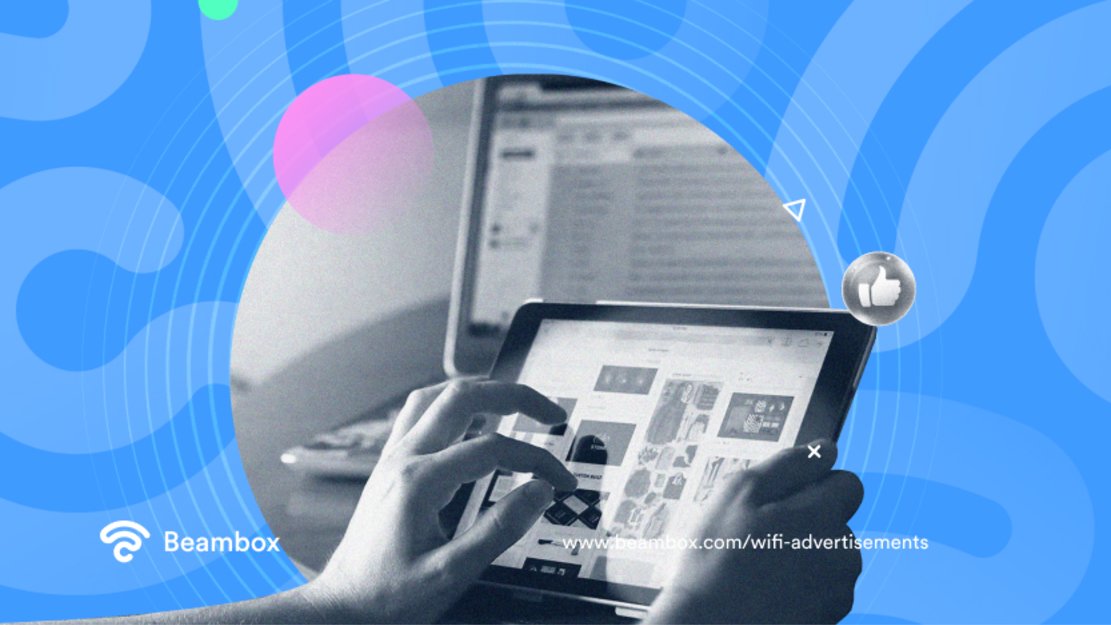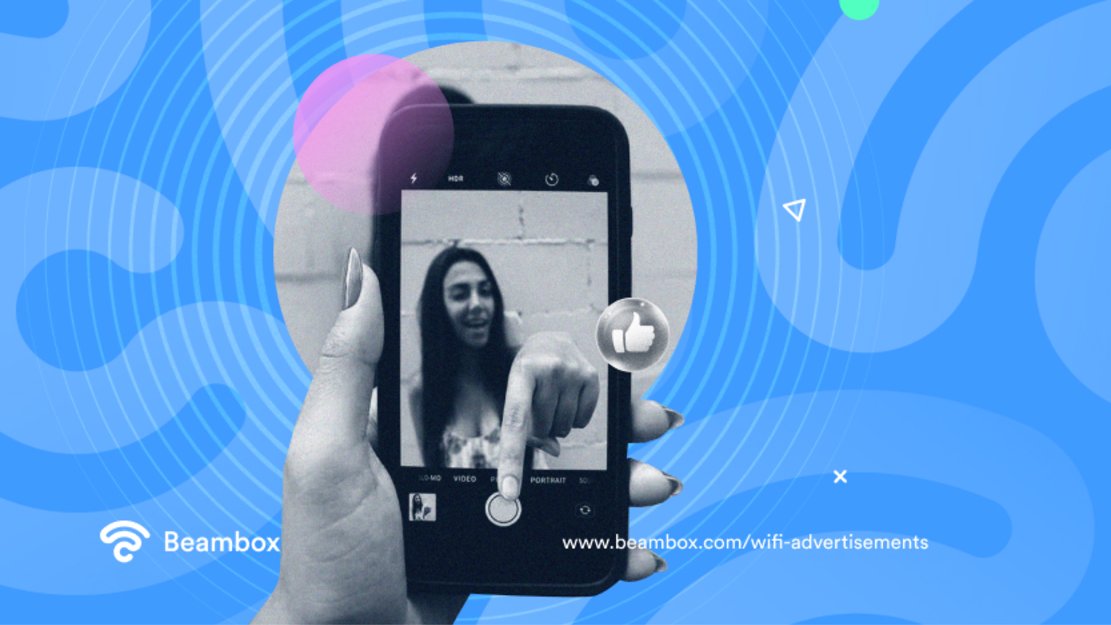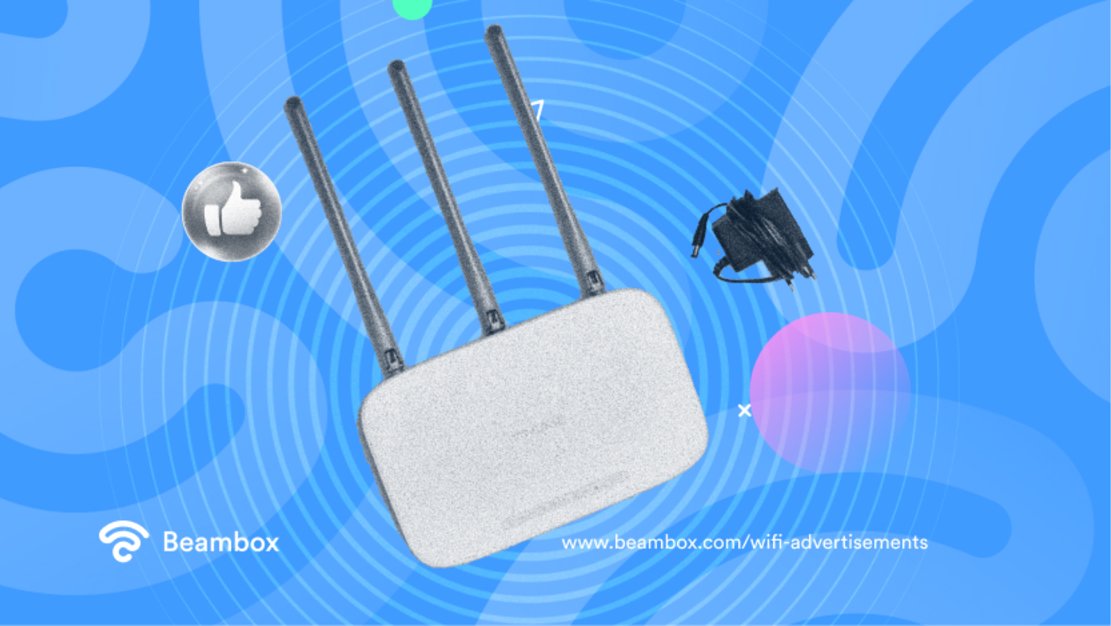WiFi advertisements (also called WIFi ads or wireless advertisements) are a marketing tool that uses WiFi networks to reach customers.
It has many advantages, including cost-effectiveness, a broad audience reach, and increased brand awareness. It allows businesses to interact personally with customers, increasing click-through rates and conversions.
We can get more gems from WiFi advertising than those described above.
But before digging for more, let’s find out how wireless ads came to be.
History of WiFi Advertisements

Despite its growing popularity, most people are unaware of the history and effectiveness of WiFi advertisements.
Knowing WiFi advertising’s history can help business owners make informed decisions about incorporating it into their marketing strategies.
The Early Developments of WiFi Advertisements
WiFi advertisements have come a long way. Key milestones and innovations mark the history of WiFi advertising, shaping the industry and its effectiveness.
-
1994: Introduction of banner ads. Wired magazine created the first digital ad. It is a banner that reads, “Have you ever clicked your mouse right here? You will.”
AT&T commissioned the banner ad, which, when clicked, led the audience to their landing page. The prepaid advertising space for banner ads later gave rise to pay-per-click.
-
1995: Targeted display ads. Advertisers began focusing on targeting specific groups of people instead of placing random ads and hoping the right people would see.
-
1996: Advertisers improve ROI tracking. A new service named Dynamic Advertising Reporting and Targeting, or DART, was introduced by Doubleclick. It allowed businesses to monitor the number of times an ad was viewed and clicked on various websites.
-
1997: Pop-up ads emerged. Despite being widely disliked, pop-up ads hold a significant place in the timeline of online advertising. Advertisers saw it as a potential solution to salvage online advertising as banner ad clickthrough rates declined.
WiFi Advertisements and the Rise of Search Engines
WiFi advertisements as we know them today took a dramatic turn at the turn of the millennium when search engines arose.
- 1999-2002: Paid search and pay-per-click thrived. Search engines steadily gained popularity. Advertisers looked to sponsored search as a new form of digital advertising.
GoTo.com, later acquired by Yahoo, launched the initial pay-for-placement search engine service in 1999. Companies that spent more money on placement influenced the search results significantly.
Google emerged with the willingness to correct this. In 2000, they introduced AdWords. It aimed to develop a sponsored search experience that generates revenue while preserving the relevance of search results. This model remains today.
-
2006: Targeted digital ads. The rise of social media platforms in the mid-2000s prompted advertisers to explore ways to incorporate advertising content. In 2006, Facebook began collaborating with advertisers, despite initial reluctance to include ads on its platform. They started with simple display ads and sponsored links, gradually transitioning to more sophisticated ads tailored to users’ demographics and interests.
-
2010: Native ads are the norm. A new cluster of media companies surfaced. Platforms like BuzzFeed and Mashable opened up fresh possibilities for advertisers to engage with their audiences. They offer sponsored content and native advertising.
WiFi Advertisements Today
Online advertising has rebounded, and advertisers now recognize its importance. WiFi advertisements are more sophisticated and utilize innovative technologies and branding tools.
2012 to present: From Mobile to In-App Advertising. As smartphones became increasingly popular, advertisers focused on in-app mobile advertising. Mobile ads spending surpassed that of desktop and will reach $500 billion in 2024.
The rise of voice technology further fueled this trend. For example, devices such as ‘Alexa’ enable users to conduct voice searches.
Real-time marketing has surged in popularity in the last decade thanks to social media growth. Now, businesses can respond to customer feedback in hours or minutes, almost in “real-time.”
New advertising opportunities also arose with the increasing use of voice technology, artificial intelligence, and other digital technologies. The Internet of Things (IoT) significantly impacted marketing and advertising.
A key point to include is an in-depth understanding of consumer behavior and delivering personalized and relevant advertisements.
Advertisers zeroed in on wireless advertising as a way to accomplish this.

What Are the Benefits of WiFi Advertisements?
The benefits of WiFi advertisements are numerous. Also, there are both recognizable and more subtle areas where we see its benefits.
Let’s explore the benefits of WiFi advertising and utilizing a guest WiFi access point.
-
Cost-Effective: WiFi ads are inexpensive compared to other marketing methods. It is an affordable way to reach the audience in a location.
-
High Engagement: Users engaged with their devices will likely pay attention to wireless advertisements. This engagement leads to higher click-through and conversion rates.
-
Customer Insights: Wireless advertisements provide valuable insights into customer preferences, improve products and services, and create more targeted marketing campaigns.
-
Brand Awareness: WiFi advertising increases brand awareness. By repeatedly displaying the brand message and logo, WiFi ads keep the brand top of mind for potential customers.
-
Targeted Advertising: WiFi advertisements target specific audiences based on location, demographics, and behavior. They tailor advertisements by region, time of day, length of visit, and more.
Businesses that reach the right people with the right message at the right time increase conversion. Amid a world saturated with ads, a more personalized note is the one heard the best.
-
Customer Loyalty: Free WiFi access help businesses build customer loyalty by creating a positive experience. Personalized customer experiences through targeted ads and promotions match the interests of customers. The experience fosters engagement and connection between the business and the customer.
-
Testing Grounds: WiFi advertising is an ideal platform to conduct tests. It enables businesses to test quickly and effectively, avoiding expensive and disappointing failed campaigns. Campaign trials can reveal which ads resonate well with target customers. Trials also show areas where enhanced customer relationships are possible.
Retail WiFi Advertising – Using WiFi to Market Your Retail Business
Are you more interested in retail WiFi advertising? As defined in the onset, WiFi advertisements focus on audiences based on location, demographics, and behavior.
Retail WiFi advertising focuses on personalized ads and promotions to customers within a retail location using WiFi networks. The location could be a store, a restaurant, a hotel, or a community within a WiFi network’s proximity.
Retailers provide free WiFi by requiring customers to sign in with their email or social media accounts. Once connected, the retailer’s WiFi system tracks the customer’s device for targeted advertising based on their behavior and demographics.
We must recognize this aspect. It allows retailers to utilize collected data to track customer traffic patterns, monitor engagement, and provide personalized deals and incentives. The technology can collect customer feedback and opinions which are valuable to marketers.
7 Ways To Maximize the Benefits of WiFi Advertisements in Retail
As we’ve seen, WiFi advertising provides many benefits, including long-term ones. However, to maximize its potential, retailers should implement strategies that create more tailored and compelling shopping experiences for customers.
The following section will discuss seven ways to get the most out of retail WiFi advertising using a guest network.
1. Get Comprehensive Customer Analytics Using WiFi Advertisements
WiFi analytics is a crucial element for effective retail marketing campaigns. Accurate and comprehensive data about customers is required to succeed in today’s market. Market research firms can be expensive. The challenge for most marketers is to gather the data without overspending.
With WiFi advertisements, you can collect this data passively. You can obtain valuable anonymous behavior data even if customers don’t log in. The real-time data provides insights into customer reactions to your marketing efforts.
Using your guest WiFi network, you can uncover a range of insights such as:
- Customer dwell time
- Foot traffic
- First-time visits
- Return visits
- Customer retention
- Conversion rate
- Peak visit periods, and
- numerous other valuable metrics
Furthermore, if you have several branches, you can compare the data across the different locations and for any given period.
2. WiFi Advertisements Create an Extensive, Organized Customer Database
WiFi advertisements automatically generate a profile and incorporate anonymous data linked to the customer’s device. Moreover, their behavior data will still be collected even if the customer never logs in again.
The information stored in the customer database includes:
- Customer’s name, Email address
- Age
- Gender
- Birthday
- Zip code
The database also records customer behavior data, including promotions redeemed and average spending.
Since customers provided their email addresses, you can add them to your email marketing campaigns. As your list grows, you can create segments for targeted messaging. This approach is nearly twice as effective as non-targeted messaging (77%), significantly improving marketing campaigns.
3. Set Up Automated Marketing Campaigns With WiFi Advertisements
Retailers often need more time to conduct email campaigns manually and measure their ROI. WiFi advertisements’ significant advantage is automated marketing. Marketers set triggers based on customer demographics, behavior data, or both. The setup allows them to create a message and send it automatically to specific customers.
The following can automatically trigger the sending of messages:
- Predetermined milestones
- Loyalty based on visits
- When customers post a rating
- Anniversaries
- A week before the customer’s birthday
- Upon registration to your WiFi
- When a customer misses returning by a certain number of days
After configuring the trigger criteria, you can select which customer segment to send a message. You can also schedule the campaign with an end date.
4. WiFi Advertisements Enhance Customer Loyalty, Spending, and Trust
The primary advantage of WiFi advertisements is enhancing customer loyalty through tailored messaging. This action generates higher spending and customers who endorse your brand.
Moreover, keeping your brand in front of your customer’s minds makes them choose your establishment when making decisions.
5. Enhance Online Reputation With Positive Ratings and Reviews
In today’s world, consumers rely heavily on online ratings and reviews to make purchasing decisions. Positive ratings can attract customers to your business. Negative ratings can lead them to your competitors, even if they were previously loyal.
6. Retain Churned Customers With WiFi Advertisements
Retailers benefit greatly from WiFi advertisements in combatting customer attrition, also known as customer churn. If a retailer’s churn rate is high, it can negatively impact their business.
You can identify at-risk customers using WiFi analytics. Then, you can send them a targeted message with an offer to entice them to return and re-establish their loyalty.
7. Improve Retail Operations With WiFi Advertisements
WiFi advertisements provide more benefits beyond improved customer loyalty and marketing. Understanding customer behavior, sentiment, and demographics help retailers improve their operations.
For example, data on peak visitation times inform staffing decisions. Customer reviews guide decisions on ambiance, menu changes, and cleanliness.

How To Get Free WiFi Advertising
If you want free WiFi advertising for your retail business, there are various options to explore. Here are some places to start:
-
Social Media Platforms: Social media platforms like Facebook, Twitter, and Instagram are great places to run free WiFI advertisements.
-
Business Directories: Free business directories like Yelp and TripAdvisor allow retailers to list their businesses.
-
Community Forums: Businesses can use online and in-person community forums to share promotions and events.
-
Local Omnichannel Media: Local newspapers, radio stations, and TV stations always look for new stories to cover. Moreover, most already implement an omnichannel approach to reaching their audience.
-
WiFi Advertising Platforms: WiFi advertising platforms like Purple WiFi and Zenreach allow businesses to offer free WiFi on a limited basis.
Finding a WiFi Advertising Software That Fits Your Business
The market offers a variety of WiFi advertising software, each with distinct features and benefits. Some of the most popular today are:
-
Purple WiFi: This software holds the reputation of being the leader in WiFi analytics. It offers guest WiFi, social login, and bespoke campaigns. It also has engagement tools for geofencing, messaging, and emails.
-
Zenreach: Zenreach promises quick customer list build-up, customer analytics, and automated customer engagement.
-
SpotOn: SpotOn WiFi marketing software offers targeted marketing, mobile advertisements, and customer analytics. SpotOn also provides customization options for smart campaigns and targeted promotions.
-
GoZone WiFi: GoZone advertising software features a branded login screen, automated marketing, and analytic tools.
-
HotstRx: The marketing medium for this software is Wi-Fi hotspots. Users can create their free Wi-Fi advertising network or leverage the Hotsp network to reach audiences through targeted marketing. It also offers cloud-based advertising program management and integration with Google Analytics.
The software mentioned above represents only a few popular WiFi advertisement options. Businesses can choose the one that best fits their specific needs and budget.
WiFi Advertising Router Choices
WiFi advertising routers have gotten better in recent years. Dual- and triple-band routers with multiple network support for separate customer and employee connections are now in place. Important considerations when choosing a router include security level, VPN capability, and coverage area requirements.

Here is a short list of the most popular choices of routers for retail WiFi advertisements.
-
Synology RT2600AC - Explicitly designed for office use. It offers fast connectivity, robust security features, remote worker support, private cloud server functionality, and many others.
-
Netgear Nighthawk X4S - This router is the best choice for value, with a decent WiFI speed. It improves employee productivity with faster downloads, smoother streaming, and better performance.
-
Linksys EA6350 - Linksys designed the Smart Wi-Fi router for offices with multiple connections. Dual bands and two external antennas ensure a strong and reliable wireless signal, eliminating dead spots. They built this router for flexibility.
-
Netgear Orbi Pro AC3000 - This router is the best option to cover more ground. You can cover an area of up to 5,000 square feet area and maintain speed. Your customers will enjoy fast internet speeds even when multiple devices are connected. This router uses your internet connection and creates a single WiFi network with dedicated entry portals.
-
Asus RT-AX88U - This router enables small businesses to use multiple devices more efficiently than standard routers. It also offers commercial-grade cybersecurity through AiProtection Pro, powered by Trend Micro.
-
Google Nest Wifi - Google’s sleek and user-friendly router provides up to 2,200 square feet of Wi-Fi coverage. It also offers automatic updates for new features, keeping your network safe and secure.
Make WiFi Advertisements a Part of Your Marketing Strategy
After considering the information on WiFi advertisements, you have undoubtedly developed an appreciation for its history, function, and benefits.
Make it a part of your marketing strategy to grow your business. Beambox can help gather customer data for your marketing plan by providing free wifi to your guests.
Learn more about Beambox and start growing your business now.
Get Started With Free WiFi Marketing
Beambox helps businesses like yours grow with data capture, marketing automation and reputation management.
Sign up for 30 days free